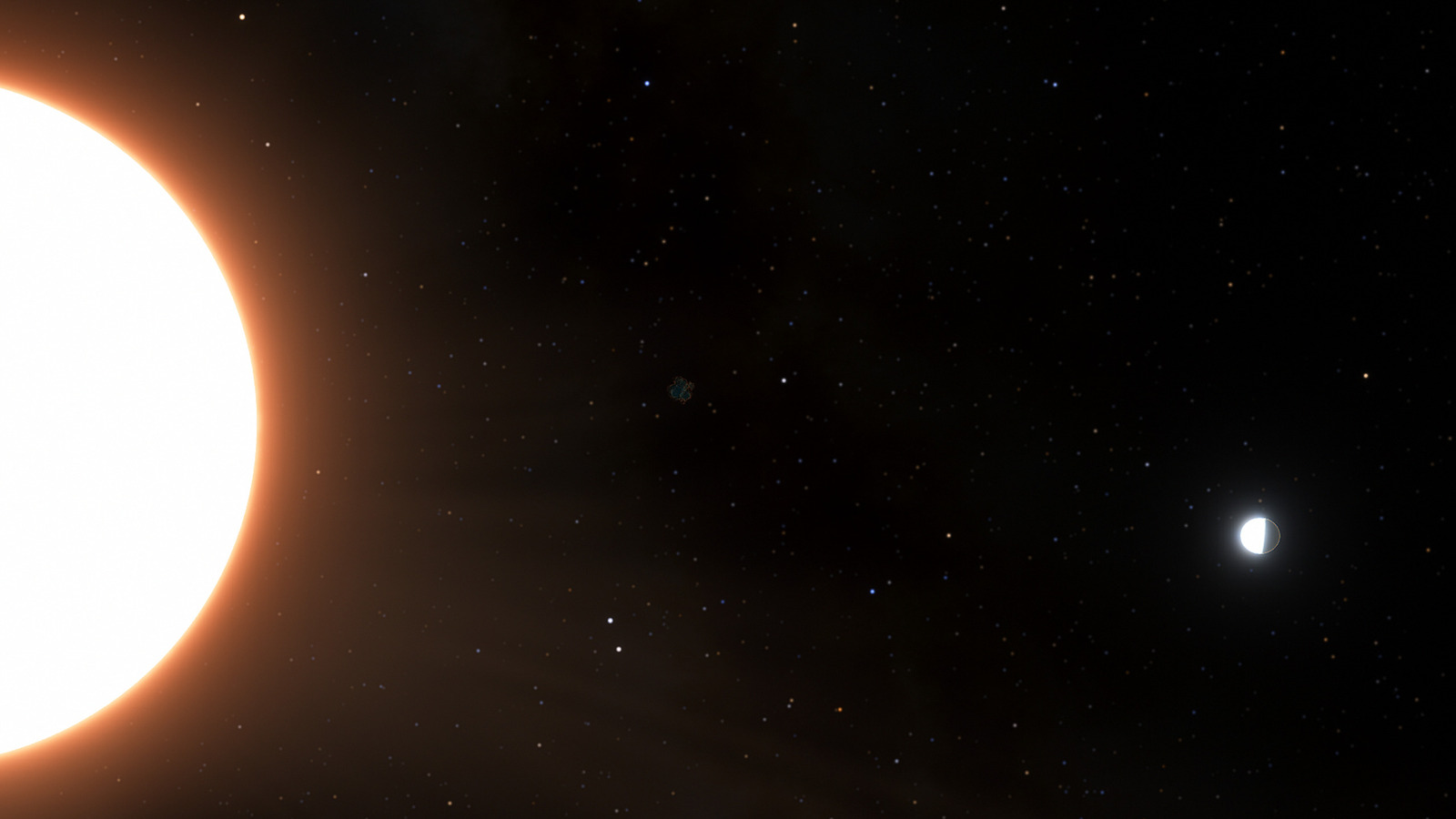The brightest exoplanet ever found is an ultrahot planet that orbits its home star every 19 hours. Planet LTT9779b is a hot world with shiny metallic clouds consisting of silicates and metals like titanium. The exoplanet is the biggest "mirror" of the cosmos that has been discovered thus far, according to astronomers. 262 light-years separate Earth from the planet. The exoplanet was chosen for further studies by the European Space Agency's Cheops project after being discovered by NASA's planet-hunting TESS mission in 2020 and ground-based observations from the European Southern Observatory in Chile. LTT9779b outshines Venus in our own solar system in terms of brightness, reflecting 80% of the light from its host star, according to observations taken by Cheops, or the Characterising Exoplanet Satellite. Following the moon, Venus is the second-brightest object in our night sky, and its thick clouds reflect approximately 75% of the sun's rays. However, only around 30% of sunlight is reflected by Earth. Research on the findings was published on Monday in the journal Astronomy & Astrophysics. James Jenkins, an astronomer from Diego Portales University in Santiago, Chile, and a co-author of the study, writes: "Imagine a burning world, close to its star, with heavy clouds of metals floating aloft, raining titanium droplets down."

A planetary puzzle
Albedo is a measure of how much light an object reflects, and most planets have low albedo values because of their dark, uneven surfaces or light-absorbing atmospheres. The reflecting clouds of Venus and icy planets like Jupiter's moon Europa and Saturn's moon Enceladus are well-known exceptions. But LTT9779b's brilliance is unexpected. 3,632 degrees Fahrenheit (2,000 degrees Celsius) is probably reached on the exoplanet's side that is facing its host star. Water clouds cannot develop at temperatures higher than 212 degrees Fahrenheit (100 degrees Celsius). Even clouds formed of metal or glass shouldn't exist in LTT9779b because of how hot it is. According to study coauthor Vivien Parmentier, a researcher at the Observatory of Côte d'Azur in Nice, France, "It was really a puzzle until we realised we should think about this cloud formation in the same way as condensation forming in a bathroom after a hot shower." "To steam up a bathroom, either chill the air until water vapour condenses or keep the hot water running until clouds develop because the air is so full of vapour that it can no longer contain any more.

Similar to LTT9779b, which is extremely hot, metallic clouds can occur due to an excess of metal and silicate vapours in the atmosphere, according to Parmentier. LTT9779b has additional confusing characteristics, such as its size. The planet, which astronomers refer to as an "ultra-hot Neptune" because of its extreme temperatures and Neptune-like size, is the first of its kind to be discovered so close to its star. It's a world that shouldn't exist, Vivien declared. We expect that the atmospheres of planets like these will be blasted away by their star, leaving nothing but naked rock left. The planet's metal clouds, according to scientists, are what enable life to flourish in such an odd environment. Sergio Hoyer, the lead author of the study and a postdoctoral researcher at the Marseille Astrophysics Laboratory in France working on the Cheops project, claims that "the clouds reflect light and prevent the planet from getting too hot and evaporating." The atmosphere, too, is thick and difficult to blow away due to the planet's high metallic composition.
© Copyright 2023. All Rights Reserved Powered by Vygr Media.
























